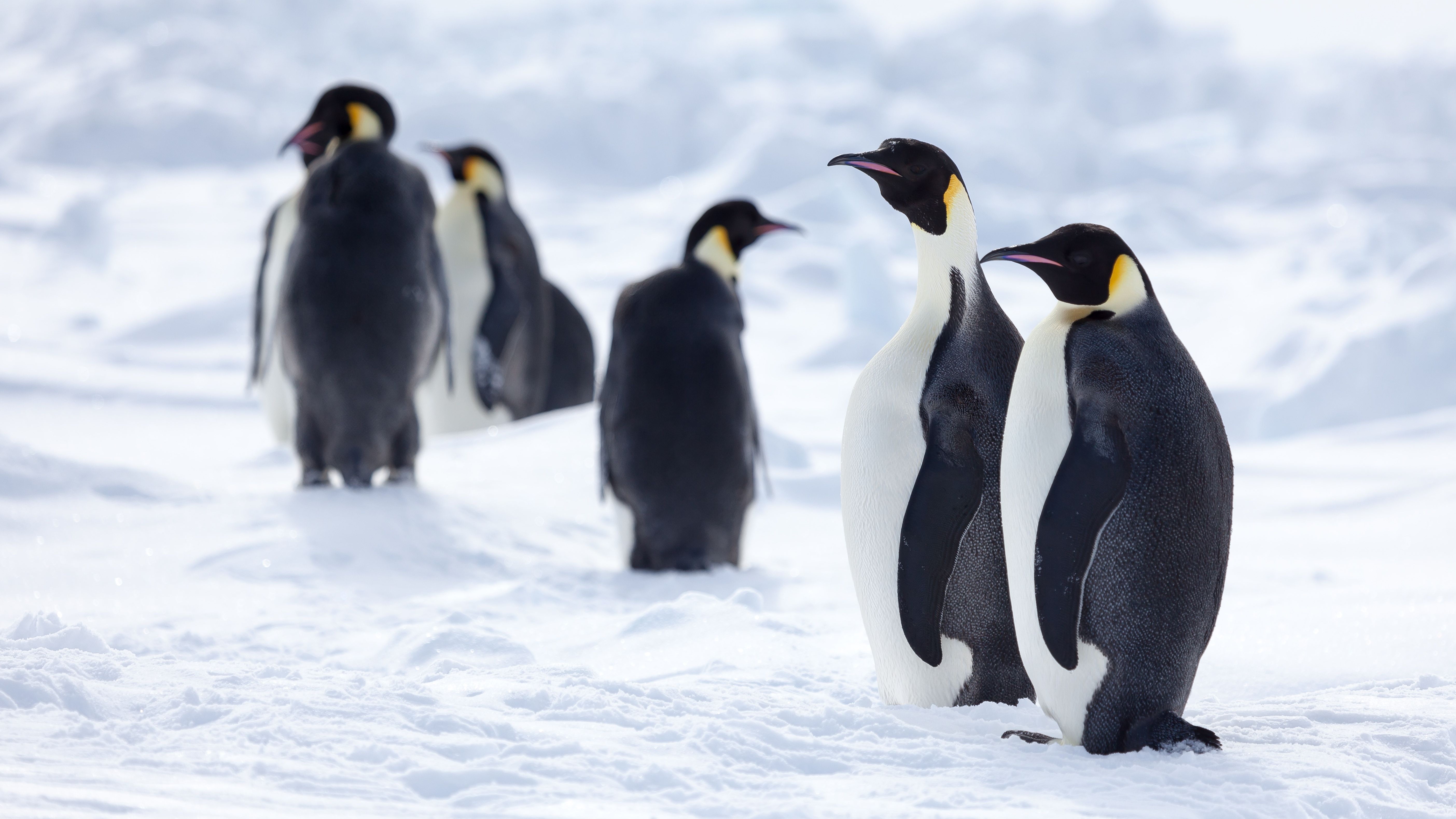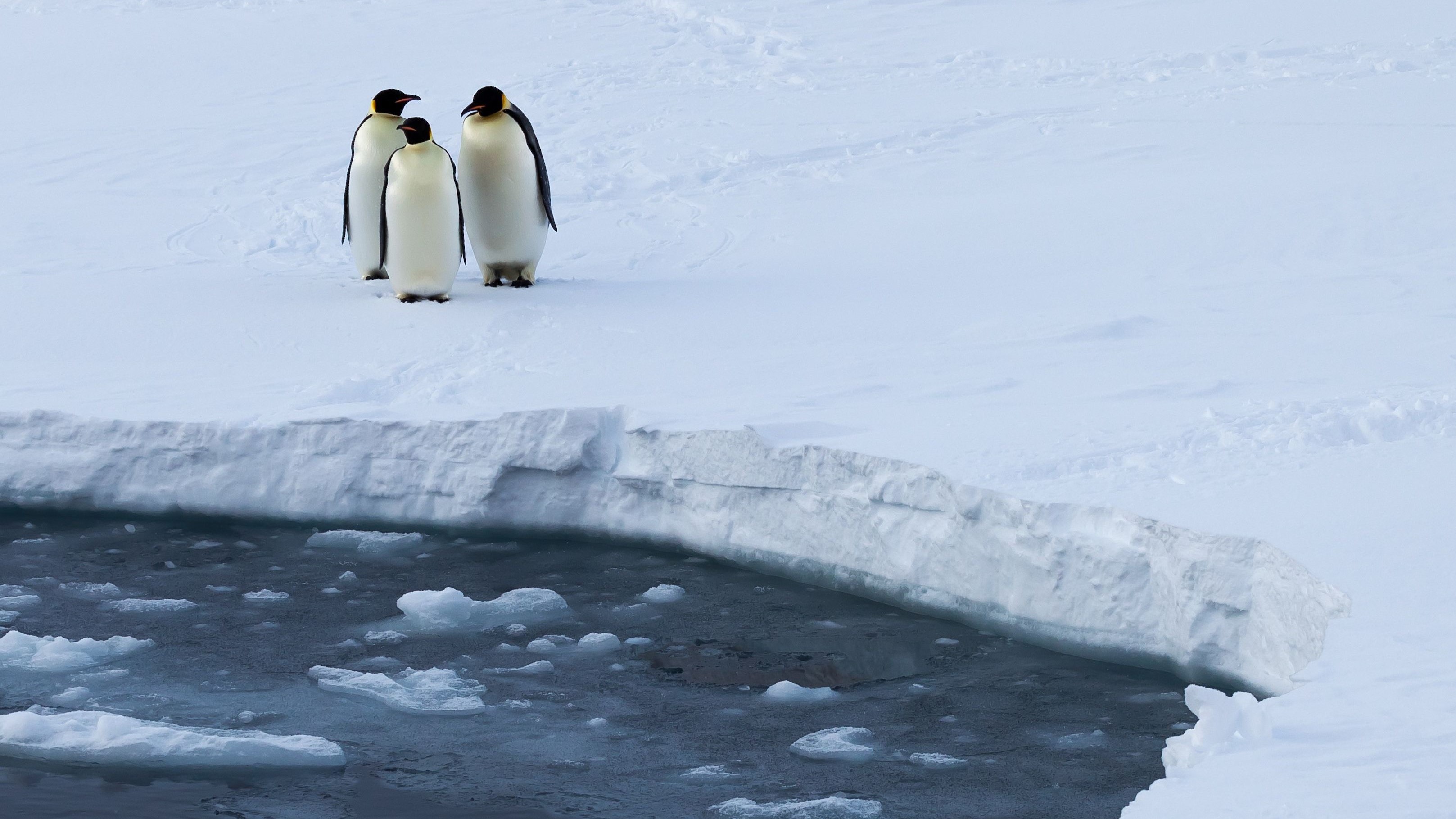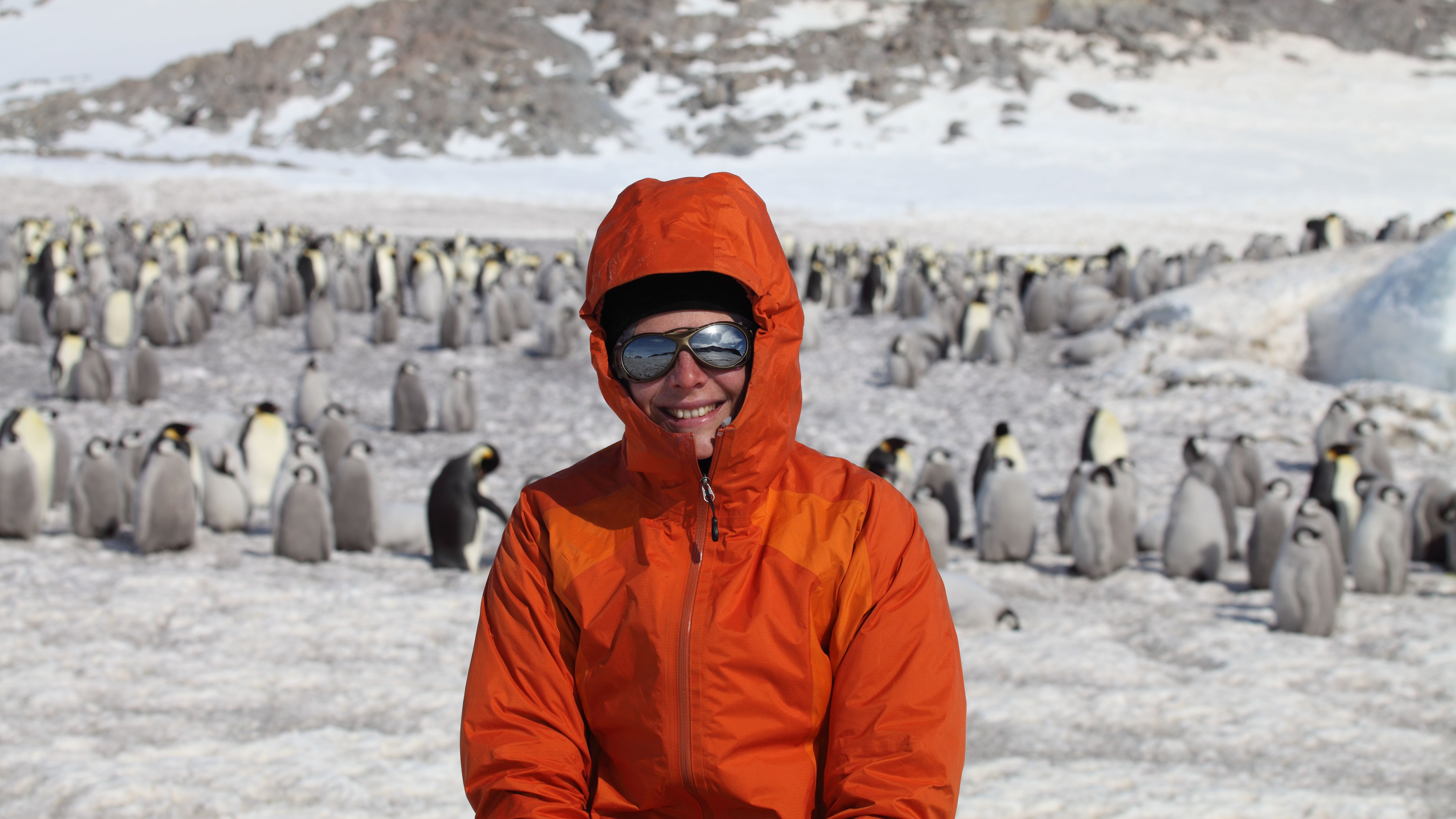Melting sea ice could wipe out 98% of emperor penguins by the end of the century
The U.S. Fish and Wildlife Service has proposed listing the species under the Endangered Species Act as a result of the findings.

Emperor penguins — the largest species of penguin on Earth — are unlikely to survive past the end of the century if current rates of greenhouse gas emissions and melting sea ice continue, according to researchers.
A new study by an international team of penguin experts has revealed that 70% of emperor penguin colonies in Antarctica could become extinct by 2050 if the current rate of sea ice loss continues and that 98% of colonies could be wiped out by 2100 under the most extreme scenarios. This would make the species "quasi-extinct," meaning that, despite having remaining individuals, the species would not recover and would eventually die out.
"Given rapid climate change and projected loss of sea ice, it's not really surprising," lead author Stephanie Jenouvrier, a seabird ecologist at the Woods Hole Oceanographic Institution in Massachusetts, told Live Science.
Related: 8 ways global warming is already changing the world
The findings have led the U.S. Fish and Wildlife Service (USFWS) to propose listing the emperor penguin (Aptenodytes forsteri) as a threatened species under the Endangered Species Act (ESA). If conservation measures linked to that listing are successful, the species could still survive the coming decades, Jenouvrier said.
Melting sea ice
The main problem facing emperor penguins is a loss of sea ice in Antarctica resulting from rising global temperatures.
"Emperor penguins depend upon sea ice for breeding, molting and feeding," Jenouvrier said, so it is vital for their survival.
Sign up for the Live Science daily newsletter now
Get the world’s most fascinating discoveries delivered straight to your inbox.

Especially when breeding, the penguins also rely on a certain amount of sea ice that researchers call the Goldilocks zone. For penguin parents, ice within this "just right" zone provides the perfect balance between safety for raising chicks and ample food.
"If there is too little sea ice, chicks can drown when sea ice breaks up early," Jenouvrier said. "If there is too much sea ice, foraging trips become too long and arduous, and the adults and chicks may starve."
But computer simulations predict that if current rates of ice loss continue, the Goldilocks zone will disappear in most places on the Antarctic coastline, which could cause widespread breeding failures and prevent populations from recovering, Jenouvrier said.
Certain colonies have already experienced breeding failures due to melting sea ice. For example, in 2016, melting sea ice led to a massive breeding failure in the colony at Halley Bay, when 10,000 chicks drowned after an early ice melt dumped them in the water before they had grown their waterproof feathers, the researchers noted in the paper.
The new findings will also have implications for a wide range of other species. "Emperor penguins are indicator species whose population trends can illustrate the consequences of climate changes for other species," Jenouvrier said. These species include Adélie penguins (Pygoscelis adeliae), leopard seals (Hydrurga leptonyx) and Weddel seals (Leptonychotes weddellii).

New listing
The USFWS has now taken the step of calling for emperor penguins to be listed as threatened under the ESA.
This move is notable because the USFWS lists very few species that are not native to the U.S. under the ESA. In addition, the current emperor penguin population is relatively stable, and the ESA generally covers species that are in dire need at the time of listing. Across 61 emperor penguin colonies in Antarctica, between 625,000 and 650,000 emperor penguins are estimated to be alive, according to the USFWS.
However, the risk the melting sea ice poses to emperor penguins is so great that steps to protect them have to be taken, the researchers said in the paper.
If listed as threatened, the species could no longer be imported into the U.S. for commercial reasons and fishing companies would be banned from targeting the penguins' prey around Antarctica, which include krill, small fish and squid. Federal agencies would also be required to ensure that their actions, including carbon emissions, do not jeopardize the penguins or their habitat. However, this last measure has been hard to enforce for other climate-impacted species, Jenouvrier said.
"I think it is a significant step because the USFWS has not consistently decided to list species that are threatened by climate change, and particularly sea-ice loss, so this decision can add to the precedent," Jenouvrier said.
Polar bears are the only other sea-ice-dependent species currently protected under the ESA.
Hopefully, the new listing will increase the emperor penguins' chances of survival "by increasing awareness about the impact of climate change and the need to take climate actions," Jenouvrier said.
The study was published online Aug. 3 in the journal Global Change Biology.
Originally published on Live Science.

Harry is a U.K.-based senior staff writer at Live Science. He studied marine biology at the University of Exeter before training to become a journalist. He covers a wide range of topics including space exploration, planetary science, space weather, climate change, animal behavior and paleontology. His recent work on the solar maximum won "best space submission" at the 2024 Aerospace Media Awards and was shortlisted in the "top scoop" category at the NCTJ Awards for Excellence in 2023. He also writes Live Science's weekly Earth from space series.










